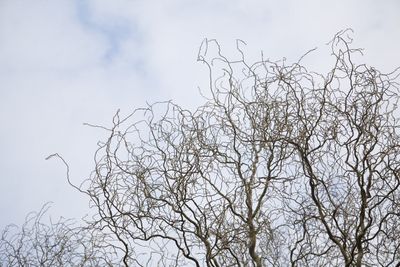In spite of its downfalls, growing a curly willow tree is a worthy endeavor, and with proper care, you’ll enjoy this fascinating tree for several years. Keep reading and learn more about how to grow corkscrew willow trees.
Curly Willow Growing Conditions
Before growing this tree, you should know where to plant curly willow. Corkscrew willow is suitable for growing in USDA plant hardiness zones 4 through 8. The tree develops a short root system that remains near the surface of the soil, so it should be planted a safe distance from buildings, driveways, sidewalks, and sewer lines. Plant curly willow anytime during spring or summer. Curly willow isn’t fussy about soil and adapts to clay, loam, or sand. Similarly, it tolerates either sun or partial shade. However, ideal conditions for this tree are well-drained, moist soil and full sunlight.
Corkscrew Willow Care
For the most part, corkscrew willow care is minimal, but the tree likes moisture. Water regularly during the first year, then water generously during periods of hot, dry weather. A 2 to 3 inch (5-8 cm.) layer of mulch will help keep the soil moist, helps keep weeds in check, and protect the trunk from damage by weed trimmers and lawnmowers. However, leave a few inches (8 cm.) of bare ground around the base of the tree, as mulch that piles up against the trunk can attract a variety of pests. Corkscrew willow generally requires no fertilizer, but if growth appears weak, you can apply a cup of balanced dry fertilizer around the tree every spring, then water deeply. If your tree is near a fertilized lawn, it probably already receives adequate nutrients. Prune corkscrew willow regularly to allow air and sunlight to enter the center of the tree, as a healthier tree free of damaged or dead branches is less prone to insect damage. However, problems to watch for include pests such as aphids, borers, gypsy moths, and willow beetles. The tree is relatively disease-resistant, although it is susceptible to powdery mildew and leaf spot. The diseases tend to be relatively mild and usually don’t require treatment.
